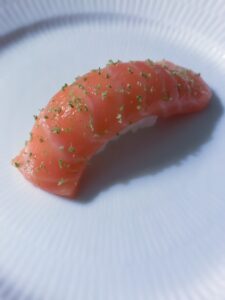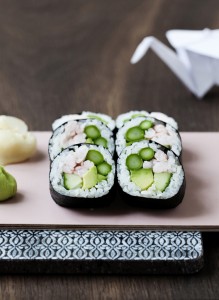
Yes, it’s true. Sushi is the easiest way to get more vegetables eaten without you getting tired of the food.
For sushi, a certain type of seaweed is used. A seaweed sort that is grown on the seabed like oats and wheat is grown in Europe. Seaweed for sushi is grown on the ocean floor in China, Japan and Korea. There is a big difference in taste, depending on in which country sushi nori is grown.
In Japan, sushi nori is harvested in the autumn.
The harvested seaweed must go through a long process, where it is washed, cleaned, dried, pressed and cut to the “right” size.
In Japan, seaweed is grown in several different qualities. There are sushi nori for everyday use and exclusive sushi nori for gourmet sushi.
Sushi is the vegetable in the world that contains the most vitamins and minerals. You should not eat very much sushi until you have met your body’s need for vegetables.
At the Sushi course for beginners, you learn all the processes you have to go through to make tasty sushi at home in your own kitchen.
_
Zoë has lectured and held sushi courses for A. P. Moller – Maersk, Hugo Boss Nordic, Novo Nordisk, Novartis, Velux, Gorrissen Federspiel, Beierholm revision, Elbek & Vejrup and many more.







